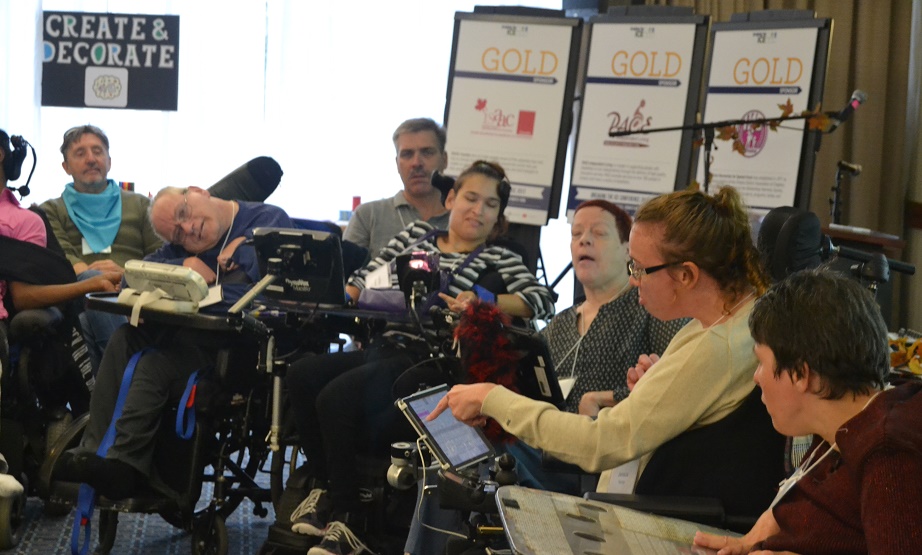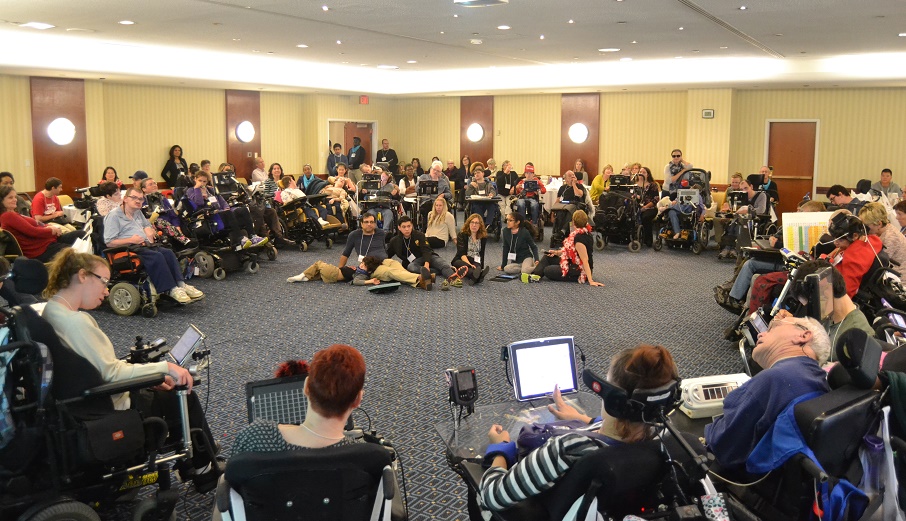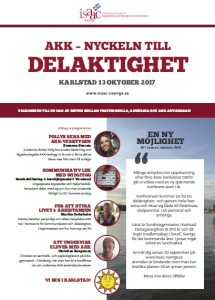Chapter News
ISAAC-Australia
ISAAC-Australia newsletter, September 2022
USSAAC
USSAAC President’s Letter to Members, December 2023
USSAAC President’s Letter to Members, November 2023
USSAAC President’s Letter to Members, October 2023
USSAAC President’s Letter to Members, September 2023
USSAAC President’s Letter to Members, August 2023
USSAAC President’s Letter to Members, July 2023
USSAAC President’s Letter to Members, June 2023
USSAAC President’s Letter to Members, May 2023
USSAAC President’s Letter to Members, April 2023
USSAAC President’s Letter to Members, March 2023
USSAAC President’s Letter to Members, February2023
USSAAC President’s Letter to Members, January 2023
USSAAC President’s Letter to Members, December 2022
USSAAC President’s Letter to Members, November 2022
USSAAC President’s Letter to Members, October 2022
USSAAC President’s Letter to Members, September 2022
USSAAC President’s Letter to Members, July 2022
USSAAC President’s Letter to Members, June 2022
USSAAC President’s Letter to Members, May 2022
USSAAC President’s Letter to Members, April 2022
USSAAC President’s Letter to Members, March 2022
USSAAC President’s Letter to Members, February 2022 (PDF, 77 kB)
USSAAC President’s Letter to Members, January 2022 (PDF, 74 kB)
USSAAC President’s Letter to Members, November 2021 (PDF, 220 kB)
USSAAC President’s Letter to Members, January 2021 (PDF, 162 kB)
USSAAC President’s Letter to Members, November 2020 (PDF, 147 kB)
USSAAC President’s Letter to Members, October 2020 (PDF, 146 kB)
USSAAC President Letter to Members, September 2020 (PDF, 141 kB)
- USSAAC Membership PowerPoint Slide (PDF, 137 kB)
USSAAC Request for Help from Members re Hurricane Laura, August 2020 (PDF, 662 kB)
USSAAC President Letter to Members, April 2020 (PDF, 131 kB)
USSAAC President Letter to Members, March 2020 (PDF, 173 kB)
USSAAC President Letter to Members, January 2020 (PDF, 176 kB)
USSAAC End of Year Letter to Members, December 2019 (PDF, 4 MB)
Wisconsin AAC Network Newsletter, Third Quarter (summer) 2019 (PDF, 145 kB)
- Communication Bill of Rights (JPF, 2 MB)
USSAAC 2019 President’s Letter to Members, February 2019 (PDF, 522 kB)
USSAAC End of Year Letter to Members, December 2018 (PDF, 189 kB)
Message from USSAAC for Those Impacted by Hurricane Florence, September 17, 2018 (PDF, 79 kB)
2017…. This fall has witnessed a seemingly endless series of disasters: Hurricane Harvey, Hurricane Irma, Hurricane Maria, the Northern California inferno, and now the raging fires in Southern California. Each of these events takes a disproportionate toll on people with complex communication needs. They lose access to their speech-generating devices and their low-tech tools, their batteries are destroyed, they are relocated to places where helpers are clueless about communicating with them, etc. Fortunately, our organization has a disaster relief action committee devoted to the support of such people, which has stepped up with a unique approach to connecting these people with resources and experts who can provide immediate help and support.
Immediate help is available for people with communication disabilities impacted by the hurricanes. People who need help, people who want to help them, and those who want to contribute funds to this effort can go to harveyaac.recovers.org (specifically for those impacted by Harvey) or aacdisasterrelief.recovers.org (for all the others).
Fortunately, our disaster relief committee has managed to raise significant funds and in-kind resources to support those who are being impacted, including a total of $30,000 in 1:1 “matching” grants from PRC/Saltillo and Tobii-Dynavox.
The above is an excerpt. Read the full article here: AAC Disaster Relief Through USSAAC: Please Help
ISAAC-Canada
National Directory of AAC Providers
ISAAC Canada is creating a National Directory of AAC Providers. Providers can include AAC centres or private practice AAC providers (professionals specializing in AAC). Please feel free to send this link to anyone you think is appropriate; it is a short questionnaire to gather information.
https://goo.gl/forms/cUys4CI4lQkbFC663
If you have any questions regarding the survey or the National Directory of AAC providers, please contact Stacey Harpell at sharpell@setbc.org.
We appreciate you taking the time and energy to fill out this questionnaire and/or send it on to others!
Imagining Possibilities Submitted by Nicole Johnson and Kris Daunoravicius
Imagining Possibilities is a project developed by Aiding Dramatic Change in Development (ADCID) www.adcid.org, a non-profit which uses creative story-making for community development. The Imagining Possibilities Leadership Team, an ensemble of adults with Cerebral Palsy who use AAC, have been developing their artistic skills over the last 5 years in creative improvisation and story-making, and expressing their ideas. Together with ADCID they create performances that are participatory for audience members with physical disabilities. Engaging with communities in Toronto, St. Catharines, Brantford and Hamilton they take a leadership role in creating artistic experiences for their peers and community members. Recently, the Imagining Possibilities Leadership Team travelled to Belgium to share their approach.
Kris Daunoravicius, an AAC user who lives in St. Catharines, shares her experience:
Nicole: “Tell me about your experience going to Belgium with the Aiding Dramatic Change group.”
Kris: “In October 2017, I went to Belgium with another member of the Aiding in Dramatic Change along with Jenny, Steve and Elaine as well as an attendant, Amanda. I found the flight long. I am not fond of airplanes anyway. The first night we stayed in a hotel, took in some of the nightlife nearby. We had dinner on a terrace in a large market square. It was quite lively with people.”
“The next day we went to a local café for coffee and pastries. Jenny and I hung out at a park and went to a museum. The museum had these funky exit doors that Jenny got stuck in, just like a scene in Star Wars. A staff from the building came to free Jenny. We strolled back to the hotel gathered our luggage, including all of the fabric we use in our workshops. Then we got picked up to go to the residence. This facility housed 60 residents. It had 6 living quarters with 10 residents living in each quarter having their own bedroom, a shared kitchen and living room, and then a shared main washroom. There was a main kitchen where the meals were cooked and then delivered to their houses. I thought this was a good concept so it could feel more like a home rather than an institution. After we got settled, we had a lovely lasagna dinner with the facility’s coordinator. Then we went to bed.”
“The next morning we began our workshop, getting to know the residents. Introducing them to our work and encouraging them to participate in their own way. They were thrilled and by the second morning they really got into it, creating their own stories.”
“We did this for 5 mornings, and then the afternoons were spent sightseeing. We took a ferry over to Antwerp with some of the residents and the staff. Enjoyed an afternoon beer on the patio, had a Belgian waffle and then had dinner in a cosy restaurant and then got the ferry back.”
Nicole: “What was the highlight of your trip?”
Kris: “At the end of the week some of the residents and our team went to an AAC conference and we performed a very good and productive show for all of the therapists. It was nice to see the residents participating in something that they had never done before.”
Nicole: “What was your biggest barrier on your trip?”
Kris: “As a first big trip, we did quite well! We went to Belgium with little knowledge in what to expect, I think if we wanted to share with others, we should do more local seminars to gain more experience. We’re working with the Brain Injury, which I hope will continue to grow, and then we should look to travel. It is an ongoing journey.”
Nicole: “Where would you like to go next with the Aiding Dramatic Change group?”
Kris: “I think travelling to different parts of the world getting more and more people involved in this type of drama would get them thinking of what is possible.”
Breaking the ICE Conference 2017 – Reflections Compiled by Roslyn Irvine
The 8th annual Breaking the ICE Conference was held October 28-29, 2017, in Toronto. People who use AAC submitted their reflections on their experience. Please click here to read the article. These photos help capture this memorable event:


Thanks to Figuratively Speaking, ISAAC-Canada’s newsletter, for the above articles.
ISAAC-Sweden
ISAAC-Sweden will be holding a day conference in Karlstad on October 13, 2017. The conference provides an opportunity for professionals, families and people who use AAC to meet. Lectures and exhibits will be available to all, and the registration fee includes membership in ISAAC-Sweden for the coming year. Additional details are available by clicking here. Please visit ISAAC-Sweden’s website for more information.
Communication Matters (ISAAC-UK)
Communication Matters National AAC Conference, 10-12th September 2017, University of Leeds. Full programme of papers and posters on research, practice and personal experiences. Exhibition of low and high tech AAC for all ages and conditions, relevant to education and allied health professionals, as well as families and AAC users themselves. Keynote Speaker: Bronwyn Helmsley (speech pathologist and clinical researcher at The University of Newcastle, Australia), on Social Media for Engagement: Safe and Enjoyable New Frontiers for People who use AAC. A second Keynote Speaker, Lisa Simpson, led a session on AAC and choreography using the “Simpson Board” with a dancer.
- CM National AAC Conference 2017 (PDF, 790 kB)
ISAAC-Canada
March 31, 2017 — The Province of British Columbia is committing an additional $4 million to help improve technology and services for British Columbians who are without functional speech. Communication Assistance for Youth and Adults (CAYA) is receiving the funding, which will be used to make life easier for people with communications disabilities who depend on its devices and services to interact with others.
CAYA supports adults and youth aged 19 years or older who need assistive communications technology due to severe disabilities that affect their speech. This can include conditions such as cerebral palsy, stroke, Parkinson’s disease and ALS, among others.
For details, please click here (PDF, 400 kB)
ISAAC-Canada was thrilled to be involved in securing this funding support, with assistance from ISAAC International, which shows the impact committed groups of individuals can have on the lives of people who use AAC and their families.
ISAAC-Italy
March 2017 — ISAAC-Italy has released a new pamphlet with updated information from ISAAC’s Italian Chapter.
- Chapter Italiano della International Society for Augmentative and Alternative Communication (PDF, 2 MB)
ISAAC-Denmark
ISAAC-Denmark sends greetings to the international members of ISAAC in this summary of events as 2016 draws to a close:
USSAAC
ISAAC-US (USSAAC) is pleased to provide a year-end message to members:
- 2016 Year-End Message to Members (PDF, 2 MB)
ISAAC-Italy
The V National Conference of ISAAC-Italy on Augmentative and Alternative Communication in Italy Models, Projects, Best Practices, took place in Rome on November 6 – 8, 2015.
The President of Italy, Sergio Mattarella, has awarded a bronze medal to the conference, announced Cristina Cerantola, President of ISAAC-Italy:
MEDAGLIA DEL PRESIDENTE DELLA REPUBLICA / MEDAL OF THE PRESIDENT OF THE REPUBLIC
This honour came as a great surprise. We are pleased to share this news and to congratulate ISAAC-Italy for the recognition their conference and Italy’s Head of State have brought to the issue of non-verbal communication. Follow the links below for photos and the official notification letter that accompanied the medal.
- Conferimento della medaglia presidenziale – ISAAC Italy, Nov 2015 (PDF, 92 kB)
- Medaglia Presidente della Repubblica – Photographs Nov 2015 (PDF, 258 kB)
News Archives
- Click here for news from International AAC Awareness Month 2016 and 2015
- Click here for Chapter News from ISAAC Council Meeting, July 20, 2014, Lisbon, Portugal
- Click here for news from International AAC Awareness Month Archives
- ISAAC Australia:
#EvidAPPchat: EVIDENCE CHATS in TWITTER: AAC and APPS (mobile technology apps) (PDF, 99 kB)
ISAAC Endorses New Australian Symbol for Communication Access (PDF, 134 kB)
- ISAAC Canada:
Kilometres for Communication Update
- Submit requests to post news from your Chapter feedback(at)isaac-online.org.
